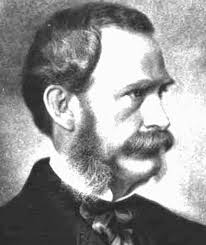
Ether ([CH3CH2] 2O) is one of the substances widely used as anesthesia in medicine today. Ether was discovered by a Spanish chemist, Raymundus Lullius in 1275. Lullius names the ether "sweet vitriol". Ether was first synthesized Valerius Cordus, a scientist from Germany in 1640. Then a scientist named W.G. Frobenius changed the name of "sweet vitriol" to ether in 1730. Prior to the discovery of the ether, Priestly discovered nitrogen-oxide gas in 1777, and two years later from its discovery, Davynitrogen-oxide in relieving pain. Prior to 1844, ether and nitrogen-oxide gases were widely used for binge drinking. They named the substance a "laughing gas", because the effect of inhaling this gas made people laugh and forget everything. The use of ether or nitrogen-oxide gas as painkillers in the medical world has actually started Horace Wells since 1844. As a dentist, he experimented with nitrogen-oxide as a painkiller to his patients when his teeth were extracted. Unfortunately his efforts showed in front of medical students John C. Warren Massachusetts General Hospital, Boston failed, even got scorn. His efforts passed William Thomas Green Morton.

Morton thought of using nitrogen-oxide gas in practice as Wells did. Then he asked for nitrogen-oxide gas to Charles Jackson, a renowned chemist at Harvard Medical School. But Jackson instead suggests ether instead of nitrogen-oxide gas. Morton found a stronger ether ether effect than nitrogen-oxide gas. Even in 1846 Morton demonstrated the use of ether in surgery at Massachusetts general hospital. When Warren's doctor's patient is ready, Morton releases ether gas (or so-called liquefied gas) which has been packaged in a gas pouch that fits a device like a mask. For a moment the patient with the tumor lost consciousness and fell asleep. Doctor Warren swiftly operated on the tumor and removed it from the neck of the patient until the operation was completed without any significant obstacles. October 16 th, 1846 became a historic day for the world of medicine. The Morton demonstration worked well and triggered the use of ether as an anesthetic on a large scale. Surgical revolution begins and ether as anesthesia is used today. He was not the first to use anesthesia, but thanks to his efforts, anesthesia was recognized in medicine. It is natural for Morton to be among the 100 most influential people in the history of the world in a book written by William H. Hart several years ago.
There was a feud between Morton, Wells, and Jackson. Each claiming an anesthetic is the invention. In a different place, a doctor named Crawford W. Long has been using ether as an anesthetic since 1842, four years before Morton published it to the public. He has used ether in every surgical operation. Unfortunately, he did not publish it, just practiced for his patients. While the three doctors and scientists who initially were the three companions were big heads, Long doctor still runs his profession as a surgeon. For years Morton spent time and material to claim his patent. He started to stress and did not care about his dental clinic anymore. Morton died on July 15, 1868 at the age of 49 at St. John's Hospital. Luke's, New York. So also with Jackson who died in a state of madness and Wells who died in a pathetic manner suicide.